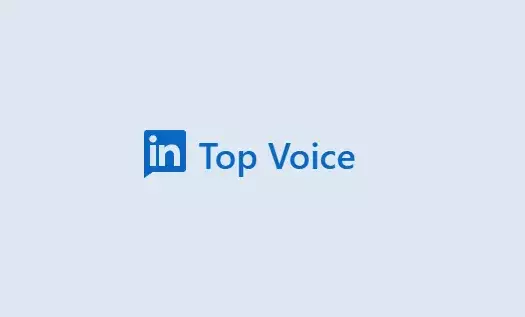The digital landscape has frequently witnessed the evolution of platforms, striving to cultivate authentic engagement while discouraging superficial recognition. A recent example of this shift is LinkedIn, which has adjusted its “Top Voice” badge program, a decision now positioning it as a leader in authentic digital acknowledgment. With the growing concern around the quality of contributions and the integrity of online communities, LinkedIn’s decision to refresh its badges system marks a critical moment in how professional interactions can be evaluated and rewarded.
Historically, LinkedIn’s “Top Voice” badges were awarded to users who demonstrated expertise and engagement over time, with recipients retaining their badges indefinitely. However, the platform has recognized the necessity for periodic evaluation. The introduction of a six-month term for these badges aligns with the notion that digital contribution requires ongoing engagement and relevance. LinkedIn’s proposal to reassess Top Voices every six months ensures that only those actively contributing high-quality content to the community maintain their badges. This change serves as a powerful reminder that authority in any field requires continual effort and participation.
While the badge’s new time constraint is a significant update, it’s equally important to delve into the criteria for maintaining such a status. To retain the “Top Voice” badge, users must generate consistent, high-quality content that resonates with their audience. The emphasis on “originality and authenticity” speaks to a growing desire for genuine voices in a sea of anodyne online content. Furthermore, the topics addressed should be relevant to the professional landscape, which elevates not just the contributors themselves but enriches the entire LinkedIn community.
LinkedIn has made it clear that adherence to its Professional Community Policies is paramount. This sets a high bar not only for creators but also enhances user safety and the overall quality of discussions that flourish on the platform. Thus, achieving a Top Voice status requires more than just popularity; it necessitates a balance between expertise, community engagement, and ethical online behavior.
Before these changes, LinkedIn experimented with a system involving gold “Top Voice” badges based on contributions to Collaborative Articles—AI-generated inquiries that encouraged user input. Unfortunately, the automated nature of this recognition led to dilution, as many individuals without the requisite knowledge gained badges purely based on quantity rather than quality. LinkedIn’s decision to phase out this automated system reflects a crucial acknowledgment of the need for authenticity in recognition and highlights the pitfalls of relying solely on metrics, which can be manipulated.
The current evaluation method emphasizes the human element, reminiscent of past verification systems on platforms like Twitter. This thrown-back approach reinforces the belief that quality cannot simply be quantified, but must be qualitatively assessed by discernible human judgment—a move that inherently values expertise over mere presence.
These changes are likely to influence user behavior on LinkedIn significantly. The pressure to produce genuinely valuable content will deter casual users and those seeking quick recognition without substantial input. Consequently, the quality of discourse on the platform may see a noticeable improvement, fostering an environment where expertise flourishes. However, this might also create a divide that could frustrate users seeking acknowledgment without the means to continuously engage at a high level.
LinkedIn’s refined “Top Voice” recognition system indeed champions authentic contributions and expertise. By removing easily obtained badges and instilling a sense of ongoing assessment, it sets a precedent for how professional engagement can and should evolve in a digital-first world. Significantly, the change emphasizes that true authority is earned through dedication, insight, and continuous effort—qualities that will resonate with engaged professionals seeking meaningful contributions both as individuals and as collective community members.
As platforms adapt to the realities of their user base and the expectations of authentic interaction, LinkedIn’s strategy represents a forward-thinking step towards preserving the integrity and professional quality of the virtual workplace.

